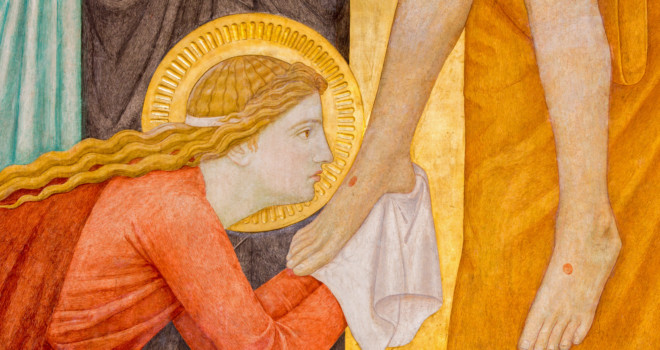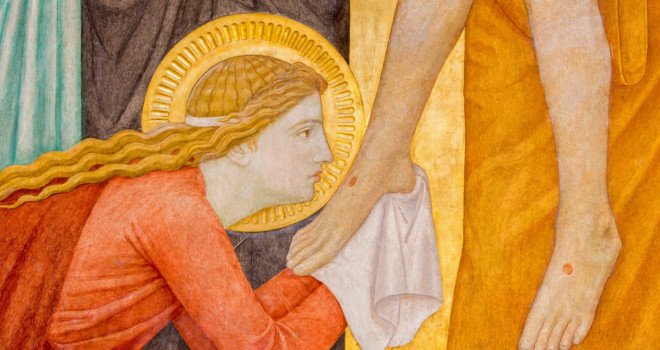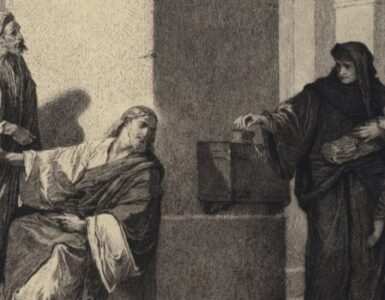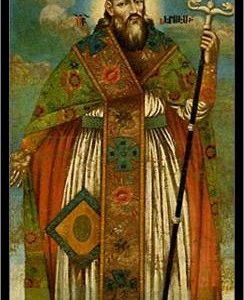St. Mary Magdalene
Little is known about St. Mary Magdalene, and what we do know isn’t perfectly clear. We know from the Gospel of Luke that she had seven demons cast out of her. We know she was a follower of Jesus. But beyond that? There is a lot of conjecture. Some see her as a formerly fallen woman or prostitute, for example (although that is never clearly stated in Scripture). Others have posited that perhaps she is the same Mary as Mary of Bethany (sister to Martha and Lazarus).
All that we know of her from Scripture is this—Jesus healed her by casting out demons and she followed Him. From those few details, we can tell a great deal about her, and about the irreplaceable role of women in the Church.
The Church — More than Hierarchy
Growing up Catholic in the 1980s and 1990s, I had my fair share of well-meaning individuals who asked me, “Oh, since you love your faith, are you hoping that women can become priests someday?”
When I studied theology at the University of Notre Dame—hoping to work towards being a catechist or working in lay ministry—the older people in my small town parish said, “Oh… maybe you’ll be the first woman pope!”
But the thing is, as a woman…I didn’t want to be a father. I wanted to be a mother.
The root of a lot of these problems is a misunderstanding of the purpose of the hierarchy. The Church is not supposed to function like a corporation, but rather as a family. A pastor is a father to his parish, a bishop to his diocese, the pope to the universal church. Yes, there are fathers (and spiritual fathers) who are lazy and uninvolved with their children, choosing to be aloof from their little ones. But there are also a good many fathers (and spiritual fathers) who are sleep deprived, have handed out dozens of their handkerchiefs to crying daughters, responded to the crisis or need of a son or daughter (even in the middle of the night), and worked tirelessly to ensure their children are fed.
These fathers show what the hierarchy is supposed to look like—men taking on a significant amount of suffering, sacrifice, and responsibility for love of their children. Moreover, the men in the hierarchy are called to do so in the unique way that only fathers can.
The hierarchy of the Church shouldn’t have anything to do with power, and should have everything to do with loving servitude, modeled after the “suffering servant”. Unfortunately, that power has often been abused, and that has led to no small amount of confusion. Of course, there are women who say they want to be priests—because our modern society thinks that the priesthood is about leadership and power, not suffering.
Mary Magdalene and the Apostles
Let’s return to Mary Magdalene. I’m sure many of you, like me, have spent hours this summer catching up on season two of the show The Chosen. Although the writers take artistic liberties with Mary’s backstory, they don’t do so with the depiction of her genuine love for Christ.
The show also depicts what she is like with the Apostles and other disciples and followers of Christ. She doesn’t take over or become a leader. St. Mary Magdalene is a servant to all she encounters. She has her heart and her ears tuned to what Christ is saying. And she too turns to His mother to better understand him. She is humble in accepting her faults, and eager to tend to the needs of others.
Turning to the end of the Gospels, we see Mary continue in her love and fidelity towards Jesus. Mary Magdalene was at the foot of the cross, and at the empty tomb. She followed wherever the Lamb went, often in little and hidden ways.
Part of her role was as a spiritual mother and sister to the Apostles. She was part of a group of women that filled the role of mothers to these first priests—keeping them fed, praying for them. Those things might seem like insignificant “women’s work” but they weren’t. They were little sacrifices, offered in love. Those hidden sacrifices were a strength that enabled the Apostles to do the work they were called to do, too.
The Role of Women in the Church Today
When faced with the question of what the role of women in the Church should be, the response often falls into one of two camps. Either, “Women should be able to participate in all the ministries men can, including the priesthood!” or, “Women should stay out of all leadership roles in the Church, because the Apostles were just men.” The answer lies in the vocation of Mary Magdalene.
Although we think of contributions in the Church as defined by action, it is actually rooted in a much deeper reality. One of the most vital roles in the Church today is that of spiritual mothers to priests and seminarians. Spiritual motherhood takes a variety of forms—some practical (like mending a ripped cassock or ironing an altar cloth), some spiritual (like prayers and sacrifices offered for spiritual sons), and some more like concrete motherhood (like being able to gently direct or “mother” a priest who is in need of growth). If these actions are done specifically as a mother does them, then they carry with them the weight of tremendous love, rooted in Christ.
Can and should women work for and in the Church, holding jobs in parishes and dioceses, holding positions on parish councils, volunteering to help with other parish ministries? Absolutely. But their real power lies in filling the same role that Mary Magdalene (in imitation of the Blessed Mother) filled for the early priests of the Church—as a spiritual mother, whose love, prayer, and sacrifices complement those of priests, the Church’s spiritual fathers. All women are called to spiritual maternity, just as Mary Magdalene was. All women are called to exercise this role from a place of profound love for Christ, just as she did.
✠
image: Mary Magdalen, detail from St. John of the Cross side altar (Vienna) by P. Verkade, photo by Renata Sedmakova / Shutterstock.com












